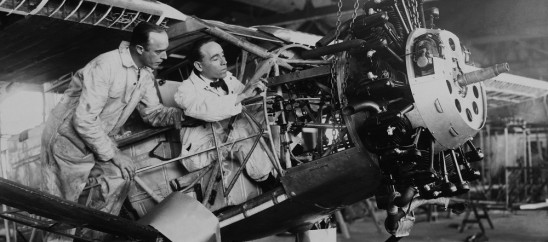
When Joint Inventors Disagree
© 2002, Gallagher & Dawsey Co., LPA
August 2002
Some of the thorniest patent problems arise in disagreements between joint inventors. Business or professional disputes between inventors can lead to serious losses of patent rights, even to the point that applications are not filed in a timely manner.
Interestingly, the patent laws provide protections for joint inventors, and even assignees, in such circumstances.
If a joint inventor refuses to sign an application or cannot be found or reached after diligent effort, the application may be made and signed by the other inventor or inventors, on behalf of all the inventors, including the nonsigning inventor. A petition including proof the penitent facts, an additional fee, and the last known address of he nonsigning inventor must be filed. The nonsigning inventor may, if they so wish, later join in the application by filing an appropriate oath or declaration.
If all the inventors refuse to execute an application, a person holding a written assignment of the invention, or one who can show “sufficient proprietary interest” to justify a filing, can make an application for patent on behalf of, and as agent for, all the inventors. Similar to an application where only some of the inventors are willing to sign, an application by an assignee or other person must include proof of the facts involved, an additional fee, and the last known address of all the inventors. However, in the case of an application made by an assignee, an additional showing must be made proving that such action is necessary to preserve the rights of the parties or to show irreparable damage that would occur from non-filing. Obviously, an application made by an assignee will face additional hurdles, as the determinations as to what constitutes “sufficient proprietary interest” and “irreparable damage” are fact intensive inquiries that will require resolution. Nonetheless, it is better to pursue an application signed by fewer than all the inventors than it is to let time run out on an inventive idea. If you foresee a problem getting all inventors to sign, act quickly, because the law requires that in all cases a diligent attempt must be made to locate and have the missing inventors sign. While “diligence” is a relative term that has no fixed definition, it could be difficult to convince the Patent and Trademark Office of the “diligence” of an effort made only days before filing.
When such applications are filed, the Patent and Trademark Office will send a notice of the filing to all inventors who have not joined in the application at the addresses proved in the petition, and will publish notice of the filing the Official Gazette, except that the publication may be waived in the case of continuation or divisional applications if notice of the prior application was given to the nonsigning inventors.
Never fail to name all true inventors! This is probably the most serious mistake that can be made when one or more of the inventors is reluctant or refusing to sign. It’s easy to rationalize that the “refusers” contribution wasn’t that great to make them a true inventor, or that it’s too much trouble to do things correctly, or that “no one will know.” Nothing could be further from the truth. If a patent is later challenged for failure to name all the inventors, and the Patent and Trademark Office determines that the omission was caused by bad faith, the patent can be held invalid and all rights lost. Even dead or disabled inventors can, and in fact, must be, named in a patent application. The legal representative of a deceased inventor, namely the executor or administrator of the estate, can sign the oath or declaration and apply for and obtain a patent. If an inventor dies during the time between the filing of the application and the granting of the patent, the patent may be issued to the legal representative. An inventor who is insane or legally incapacitated maybe represented in all the above by his or her guardian or conservator.
All joint inventors, including those who refuse to sign an application, can be at a severe disadvantage if a patent eventually issues and the inventors are no longer in agreement as to how to handle their patent. 35 U.S.C. S 262 provides in the absence of any agreement to the contrary, each of the joint owners of a patent may make, use, offer to sell, or sell the patented invention without the consent of and without accounting to the other owners. Accordingly, any one of a group of joint inventors can dispose of patent rights without compensating the other owners. Accordingly, joint inventors should always discuss drafting a written agreement with the help of a qualified patent attorney, to protect themselves and each other in the case of a later disagreement. A written agreement can prevent one inventor from acting alone, make provisions for resolving disputes between inventors, and fix proportionate sharing of any profits.
It can be a real truism that “two heads are better than one,” and some of the best inventions come from inventive teams, but joint inventors need to take the time to protect themselves, and the value of their ideas, early. It’s a lot easier to protect rights in the early stages of collaboration, when all the inventors are working together, than it is at a later date when relationships may have deteriorated.
